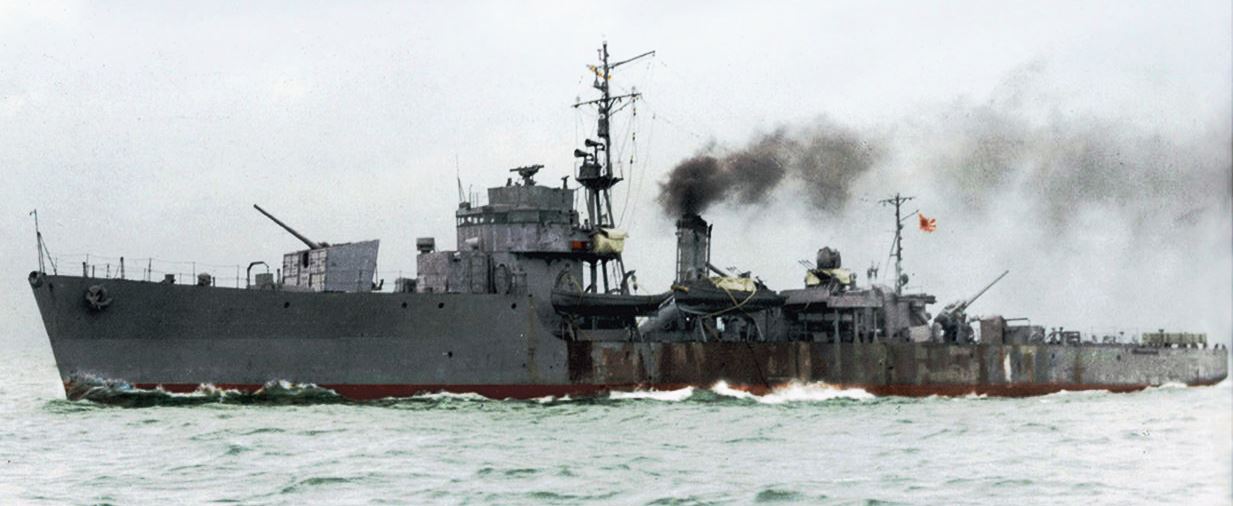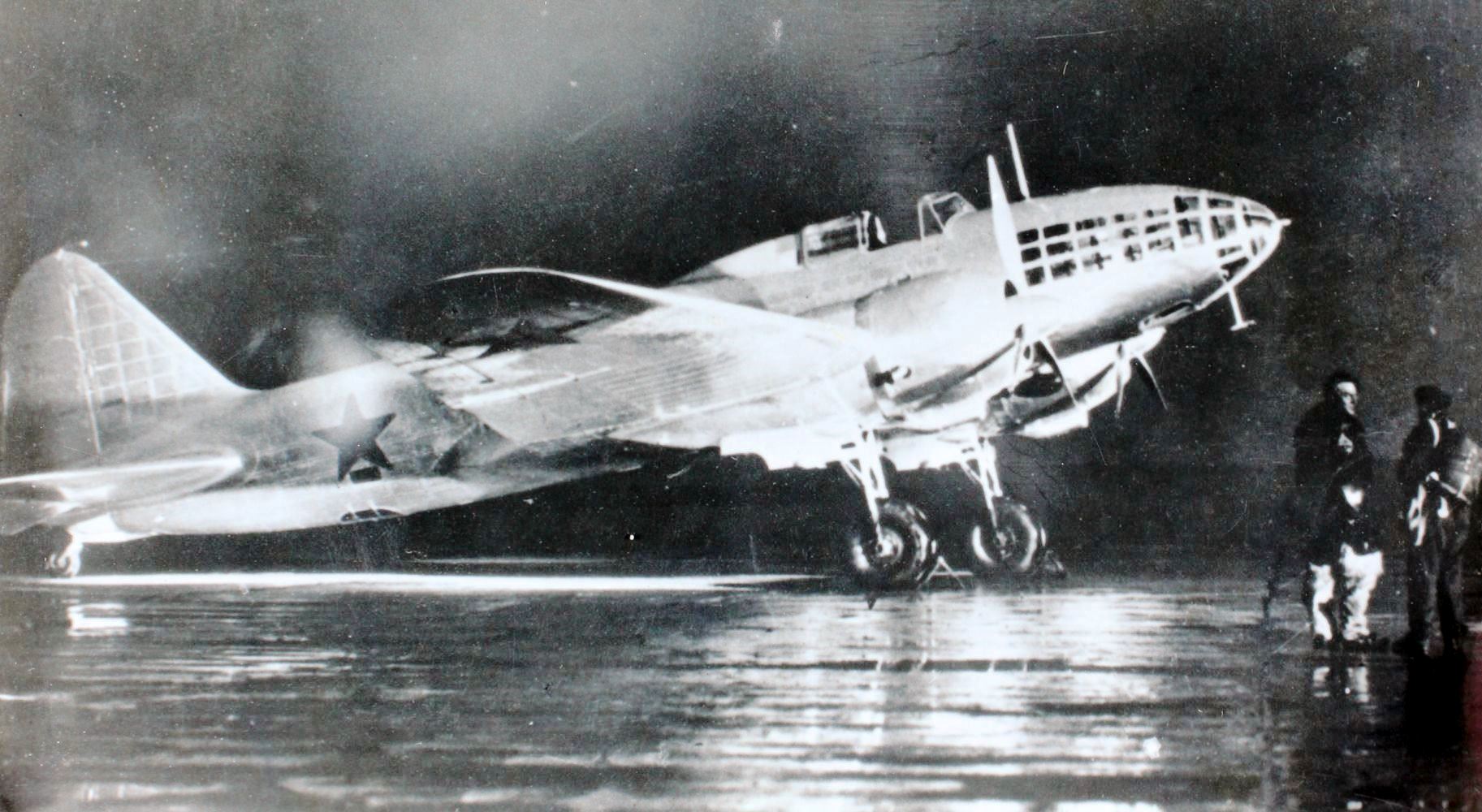© 2009-2017 Bob Hackett, Sander Kingsepp and Peter Cundall
Revision 4
6 September 1944:
Nagasaki. Laid down at Mitsubishi Heavy Industries, Ltd.
5 October 1944:
Numbered CD-82
and provisionally attached to Kure Naval District.
18 November 1944:
Launched.
1 December 1944:
Reserve Lt (later LtCdr) Mori Takeshi (former CO of
T.136) is appointed the Chief Equipping Officer (CEO).
31 December 1944:
Completed and registered in the IJN. Attached to
Kure Naval District. Assigned to Kure Guard Force. Reserve Lt Mori
Takeshi is the Commanding Officer. Transferred to Saeki Bay soon thereafter.
4-11 February 1945:
Crimea (now in Ukraine). At the Yalta Conference,
held between the US, UK and the Soviet Union, Premier Josef Stalin agrees to
attack Japan within 90 days after the defeat of Germany.
14 February 1945:
At 0700 departs Kure and at 1700 arrives at Moji.
16 February 1945:
At 0500 destroyer TSUBAKI with kaibokans CD-55 and
CD-82 depart Moji in convoy MOTA-38, consisting of SEISHU MARU and four
unidentified merchant ships.
20 February 1945:
Arrives at Ssu Chiao Shan, Shushan (Chusan)
Archipelago.
21 February 1945:
At 0700 departs Ssu Chiao Shan.
23 February 1945:
At 2230 the convoy arrives at Kirun.
E 28 February 1945:
At 1900, HI-92 then consisting only of oiler TOJO
MARU, escorted by kaibokan CD-25 is joined either on this date or earlier by
CD-82.
2 March 1945:
HI-92 anchors off Swatow. CD-82 is detached either
there or before arrival.
3 March 1945:
At 0200 convoy TAMO-47, consisting of KINYU MARU No.7,
NISSHO MARU No. 18, SEISHU MARU and four unidentified merchant ships, escorted
by kaibokans CD-55, CD-82 and CD-150 and submarine chaser CH-19, departs Kirun.
5 March 1945:
Arrives at Ssu Chiao Shan.
6 March 1945:
At 1435 departs Ssu Chiao Shan.
11 March 1945:
At 0730 convoy TAMO-47 arrives at Mutsure. At 1730
CD-82 departs Moji.
12 March 1945:
Arrived at Kure. Undergoes repairs.
23 March 1945:
Departs Kure.
24 March 1945:
At 1700 arrives at Moji.
25 April 1945:
Assigned to the General Escort Command's First Escort
Fleet's 102nd Escort Squadron.
8 May 1945: V-E Day:
Berlin. Germany surrenders unconditionally to the
Allies.
17 June 1945:
Arrives at Sasebo, where CD-82 is dry-docked.
5 July 1945:
Reassigned to the 2nd Coast Defense Group.
15 July 1945:
Departs Sasebo to work up in Aso Bay, Tsushima Strait.
6 August 1945:
Arrives at Genzan (now Wonsan), Korea.
8 August 1945:
Moscow. The Soviet Union declares that from 9 August
1945, the Soviet Government will consider itself to be at war with Japan. CD-82
departs Genzan to rescue the survivors from the 5462-ton RASHIN MARU, torpedoed
by USS PARGO (SS-264).
9 August 1945:
Carrying out Stalin's pledge at Yalta, Marshal
Aleksandr Vasilevsky, CINC, Soviet Far East Forces, launches Operation "August
Storm", the invasion of Japanese-held Manchuria (Manchukuo). The attack is made
by three Soviet army groups ("fronts") comprising 80 divisions of 1.5 million
men.
Around 0800 (JST), CD-82's lookouts observe two twin-engine Ilyushin
Il-4T torpedo bombers, heading towards the Korean coast. The escort arrives to
the scene of RASHIN MARU's sinking, but no survivors can be discovered. After
1200, CD-82 is suddenly targeted by two Il-4T torpedo bombers from the 49th
Mine-Torpedo Air Regiment (MTAP), attempting an "anvil attack". Each of the
bombers carries one 45-cm (970-kg) aerial torpedo 45-36AN (a slightly modified
Italian 45F design of 1927). One torpedo misses CD-82 aft, another passes
beneath her keel. At 1300 LtCdr Mori orders to cancel the search and return to
Genzan.
After 2100, the crew of CD-82 is first informed about the outbreak of war
with the Soviet Union. The escort makes an overnight stop in Orang Bay, S of
Chongjin.
10 August 1945:
At 0300, CD-82 departs Orang Bay. LtCdr Mori receives
the order to proceed to Rashin and escort all available transports to Genzan.
Around 1500 she spots the the 6886-ton freighter MUKAHI MARU, beached in shallow
water off the Korean coast after escaping from Rashin. CD-82 takes the ship in
tow and manages to pull it free at high tide. After learning that Rashin is
under attack of the Soviet bombers, LtCdr Mori orders to head for Genzan.
After 1700, CD-82 and MUKAHI MARU are again unsuccessfully attacked by
a flight of Soviet torpedo bombers. Expecting new attacks, LtCdr Mori orders
MUKAHI MARU to proceed to Genzan independently.
Sea of Japan. 7 miles SSW of Kumsudan, North Korea. A trio of Soviet
Il-4T torpedo-bombers from the 49th MTAP, led by the Regiment's XO, Major
Grigori D. Popovich, is on an armed reconaissance flight from Romanovka airfield
near Vladivostok, Siberia. The Soviets spot the kaibokan and MUKAHI MARU she is
escorting.




